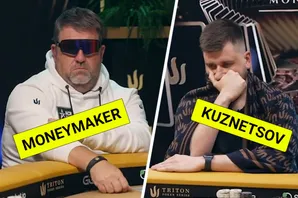The World Poker Tour just became poker's hottest property. After a quick exchange of one-upmanship between potential buyers, the WPT is now opening itself up to a bidding war.
Allied Esports Entertainment, the company that owns the WPT brand and related assets, has been looking to sell off the WPT for a couple of months now. It has had two deals in quick succession. The first with Element Partners LLC and the second with the Bally's Corporation.
On Tuesday, March 30, 2021, AESE issued a press release stating that it had "amended its stock purchase agreement with Element Partners, LLC (“Element”) to sell all of the outstanding capital stock of each of the legal entities that collectively operate or engage in the Company’s poker-related business and assets (the “WPT Business”)."
The only clues that something new had happened were the dateline and the change in price. Last first time around, Element had $78 million worth of skin in the game. This time around it has $105 million.
Deal or no deal?
What changed? Two things. Firstly, Element's initial negotiations had worked that $78 million up to $90.5 million. That number included a lump sum payout and points on the WPT brand in the form of a 5% revenue share.
Secondly, Bally's Corp stepped in with a higher offer and a willingness to pay the $3 million kill-fee in the Element deal. The Bally's bid came out to $105 million. Initially, the offer was to buy out the entirety of AESE.
However, this deal was then narrowed down to the subsidiary of AESE that holds the WPT assets. The reason given was to ensure the board could use a like-for-like comparison. This was important in order to designate the Bally's offer as superior to Element's. This was a necessary part of dropping out of the Element deal.
Bidding adieu
With things apparently settled with Bally's, it looked like the WPT was off to join a growing section of the gambling industry. However, before Bally's ink had dried under the WPT letterhead, Element swooped in with a counteroffer — another $105 million.
There are two reasons AESE took a numerically similar offer. The first is that not all $105 million dollar offers are created equal. Bally's offer included a kill fee to Element. If Element pay the same amount, the equivalent of the kill fee now goes into the profit column for AESE instead.
The other is that the original contract seems to have contained provisions for such counter-counter-offers. This is indicated in the AESE press release:
"The amendment to the stock purchase agreement increases the overall purchase price from $90.5 million to $105 million," it reads. " [...] After such review, the Board of Directors determined that the Bally’s proposal did not constitute a “Superior Proposal” (as such term is defined in the stock purchase agreement with Element)."
God makes plans and men laugh. With the lesson learned, AESE is no longer talking about done deals. This is a bidding war.
The presser goes on to say that "the transaction is expected to close in late April 2021, assuming the Company’s stockholders approve the transaction and following required regulatory approvals and other customary closing conditions."
It took Element a few days to counter Bally's offer. Late April will give Bally's plenty of time to draw new cards and raise the bet. Or even for a fourth party to join in. Current estimates put the WPT brand's value at around $120 million. So there is plenty of room for things to escalate from the current asking price.
Featured image source: Flickr




























